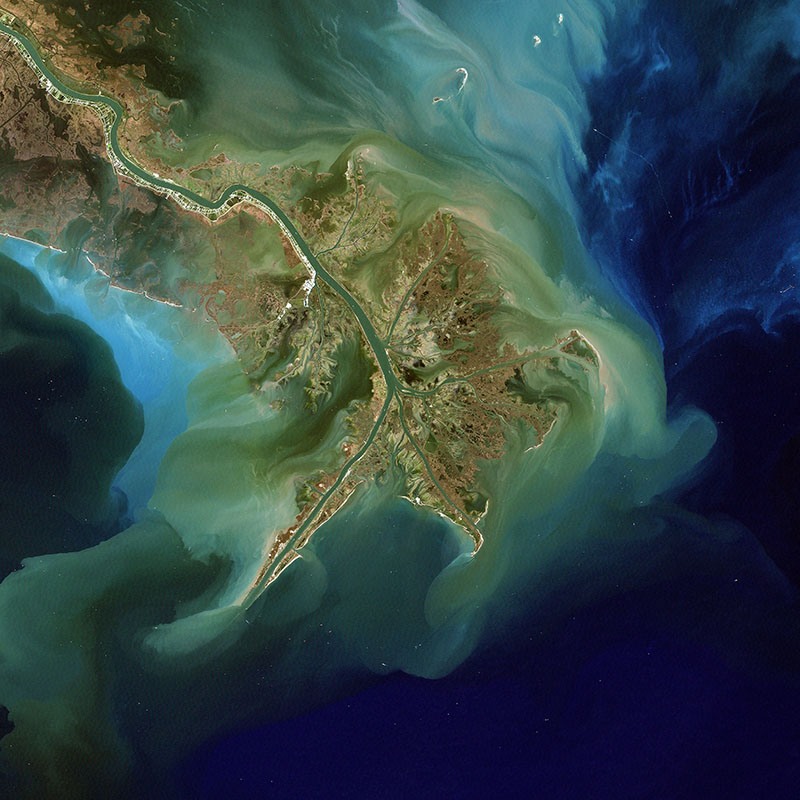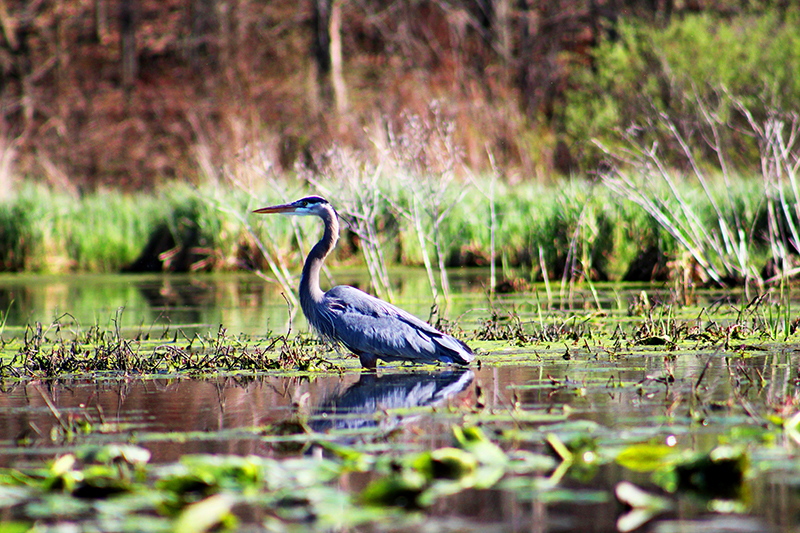Education
For as long as people have lived along the mighty Mississippi, the River has provided an incredible natural bounty: an abundance of birds, fish and wildlife, water to drink, and unbelievable scenic beauty. Since the early days of Native American settlements, millions of people have made the Mississippi River their home. Today, nearly 11 million people live in the 123 counties that border the River.
While the River is profoundly important to those who live along it, the Mississippi is also essential to the nation as a whole. Draining 41% of the area of the contiguous United States and providing a 30 million acre floodplain, the River provides an ecological lifeline for all of North America. The Mississippi River and its associated blufflands and adjacent land habitats provide a vital migration corridor and are home to many hundreds of species of fish and wildlife. The River is also a crucial economic engine since it serves as a source of water for industry; provides a significant transportation route for grain and cargo; creates a recreational destination for tourists, bicyclists, boaters, hunters, fishers and birders; and provides sediments and nutrients that, at appropriate levels, help the Gulf Coast wetlands and fisheries thrive.
Tragically, we have not taken proper care of this national treasure. Human activities, sometimes with unanticipated consequences, have pushed the Mississippi River into dramatic decline – monitoring shows that the ecological health of the River is severely degraded and is getting worse. Today 90% of the Mississippi River natural floodplain is cut off from the River by levees. Dikes, dams, and dredging have so altered the 10% that remains, that it is incapable of supporting anywhere near historic levels of birds, fish, and wildlife populations. Adjacent lands are being developed and altered – fragmenting important habitats and adding to River degradation.
It is far past time to turn the nation’s attention to restoring and protecting the health of the Mississippi River. We must ensure that the River and its delta can provide for future generations. This will require greater awareness at the local, regional, and national levels, as well as federal and state funding and policy reform.
Become a
River Citizen
Yes! The River can count on me!
I am committed to protecting the Mississippi River and will take at least three actions to care for this valuable resource. Please keep me informed about actions I can take to protect the Mississippi River as a River Citizen:
Follow Us
[et_social_follow icon_style="slide" icon_shape="circle" icons_location="top" col_number="auto" outer_color="light" network_names="true"]
Reducing Nutrient Pollution
Excess Nutrients Pollute the River
Nutrient pollution is the process where too many nutrients, mainly nitrogen and phosphorus, wash into waterbodies and lead to serious water quality problems. Sources of excess nutrients in the Mississippi River are primarily from human activities, both in urban and rural settings. The excess of nutrients results in algal blooms, which through a series of biological interactions, can create hypoxic (little to no oxygen) conditions.
Nutrient pollution in the Mississippi River basin jeopardizes clean drinking water for 18 million Americans and fuels the notorious Gulf of Mexico hypoxic ‘Dead Zone’. Fortunately, proven solutions to reduce nutrient pollution exist, and the Mississippi River Network is dedicated to cross-sector collaboration and coordination to create a healthier River for all.
Protecting Floodplains and Wetlands
Understanding Floodplains and Wetlands
Floodplains are the low-lying areas adjacent to rivers. Wetlands are land areas that are covered with water, either permanently or seasonally, and are frequently found on floodplains. When rivers overflow their channels, the water enters the floodplain. The natural rise and fall of river water into floodplains and wetlands gives extra water from snowy winters or wet springs somewhere to go. As flood waters enter the floodplain, they deposit nutrient-rich sediment, which is why they’ve been highly-prized as farm land for thousands of years.
Promoting Farm Bill Conservation Programs
Farm Bill Conservation Programs Support Farmers and Reduce Water Pollution
Every five years or so since the Dust Bowl of the 1930s, our federal government has debated, passed and signed an increasingly complex bill that dictates food and farm policy. From food stamps to farm fields and everything in between, the contents of each successive Farm Bill are rigorously discussed and dissected. The latest Farm Bill, officially known as the Agricultural Improvement Act of 2018 will dictate policy from 2019-2023 and is expected to cost over $420 billion dollars while providing vital environmental protection and employment opportunities in rural America.
MORE RESOURCES
Step 1
Become a River Citizen
Yes! The River can count on me!
I am committed to protecting the Mississippi River and will take at least three actions to care for this valuable resource. Please keep me informed about actions I can take to protect the Mississippi River as a River Citizen:
Step 2
Educate Yourself
The 1 Mississippi program is implemented by the Mississippi River Network and is the nation’s only grassroots outreach effort focused on the entire Mississippi River with the goal to educate the public on the urgent issues facing the River. The Mississippi River Network is a coalition of over 55 organizations working toward a healthy and resilient River for the land, water, wildlife, and people.
Nutrient pollution
Importance of floodplains and wetlands
Farm bill conservation programs
Step 3
Take Action
There are many ways you can take action for a healthy Mississippi River. We have a list of 10 actions you can take now. Check out our action center for current action alerts, bigger projects we are working on, and ways to get involved. You can also check out our events calendar to see what events are happening in your area.
Act Now: Oppose Yazoo Pumps, Protect Clean Water Act



